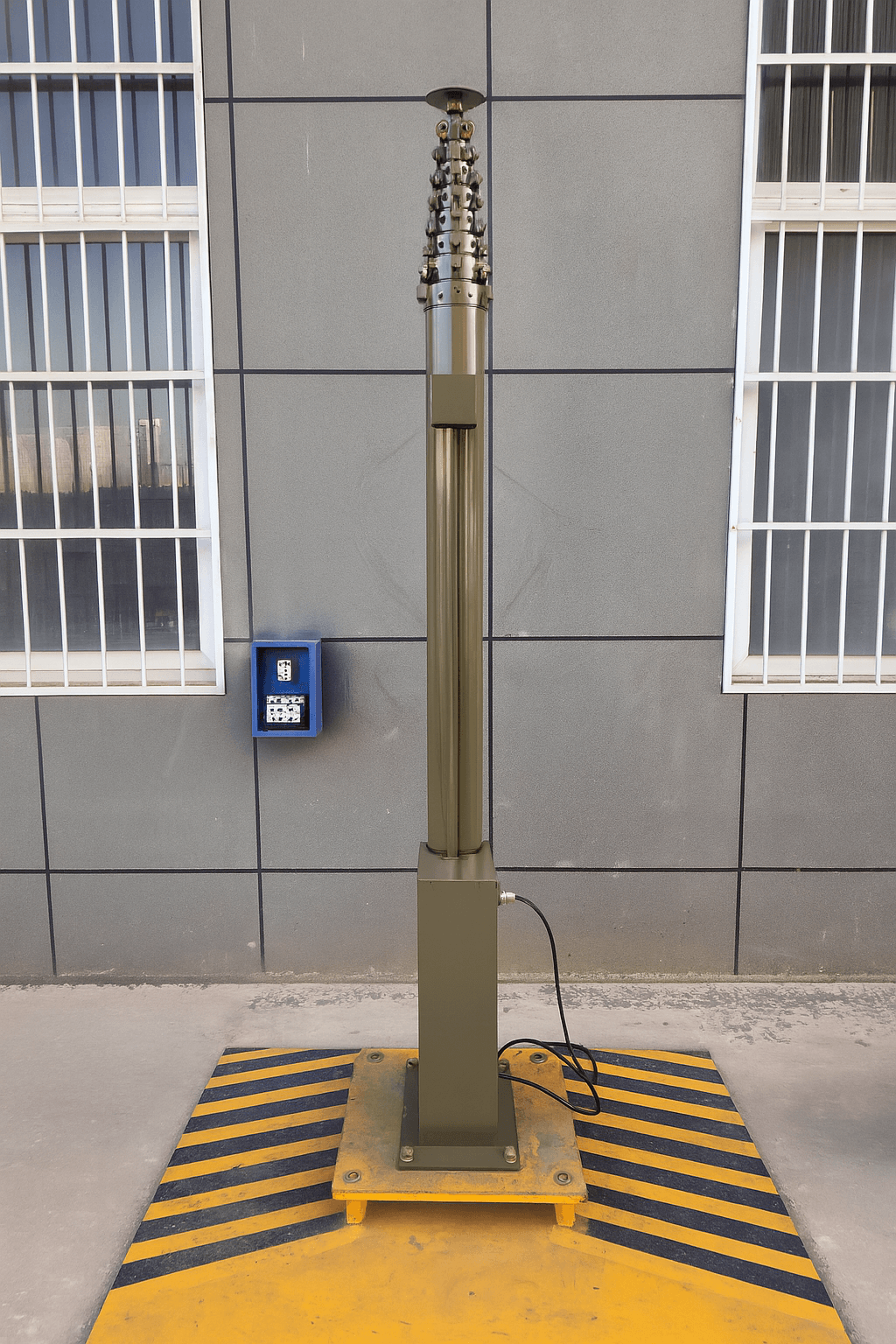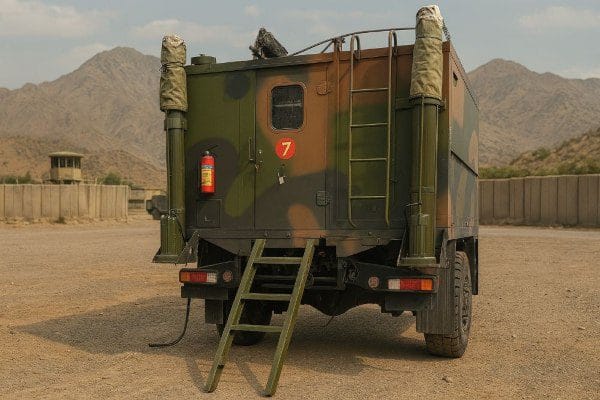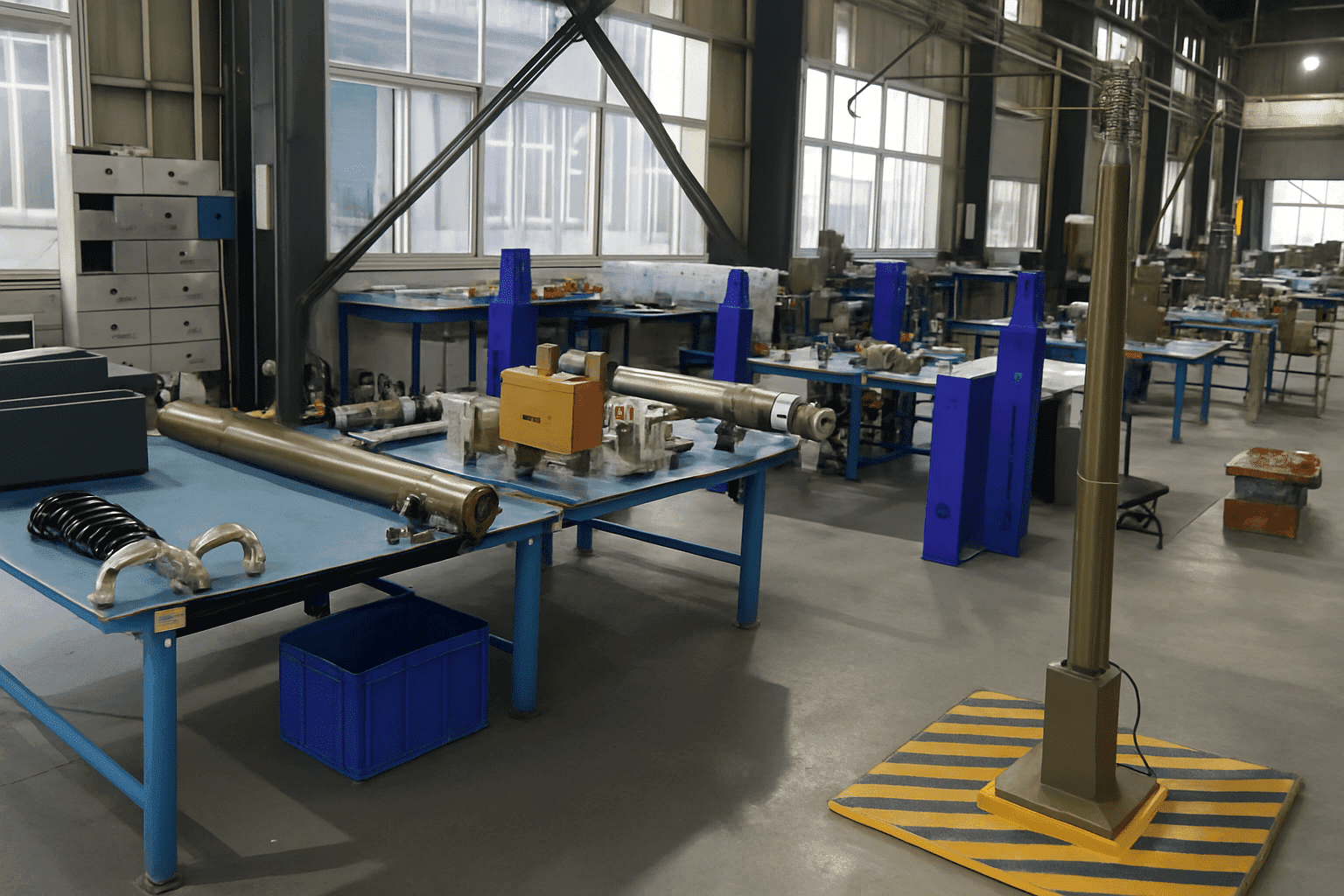Vehicle-Mounted Telescopic Mast Systems
Mobile mast systems that provide elevated solutions for surveillance, communication, lighting, and data transmission.
Available in manual, pneumatic, and electronic options.

Telescopic mast systems are developed to provide solutions for mobile communication, lighting, surveillance, and data transmission needs. Masts, which can be manufactured in different heights and load capacities, can be integrated into mobile vehicles, containers, or fixed platforms. With pneumatic and electromechanical options, they offer a safe, practical, and durable usage experience.
High Load Capacity
Telescopic Height Adjustment
Mobile-Compatible Mounting
Telescopic mast systems are strategic solutions used in field operations to elevate equipment such as cameras, antennas, lighting units, or sensors to a specific height. In missions requiring high-angle imaging, communication, broadcasting, or signal transmission—especially where it is not feasible to install fixed towers—mast systems are deployed. Thanks to their advanced structure, portability, and compatibility with various vehicle platforms, they are actively utilized across multiple sectors.

The telescopic mast system is designed for easy deployment on mobile vehicles during field operations. Thanks to pneumatic or electromechanical actuation, the mast ascends to the desired height quickly and securely. Its compact body can be integrated without disrupting the internal layout by occupying minimal space. The mast’s locking mechanism and wind-resistant structure ensure high stability.
The mast body is manufactured from aluminum or carbon alloy materials.
Depending on the model’s load capacity, it supports heavy equipment such as cameras, radars, and antennas.
To minimize swaying in windy conditions, it is compatible with optional support legs and guying systems.
The entire system complies with IP65 protection standards against water, dust, and external impacts.
Telescopic mast systems are designed to adapt to various operational scenarios without requiring fixed infrastructure.
They continue to operate even in harsh terrain, narrow urban areas, or regions without access to electricity.
Thanks to their modular body structure, they can be quickly integrated into vehicle-mounted, trailer-supported, or stationary station-type usage scenarios.
With electrical or pneumatic control alternatives, they offer customized solutions for different mission needs.
The ability to support multiple mission types on a single platform enables multi-role system deployment.
The General Directorate of Security, Gendarmerie, and municipal police departments require vehicle-mounted surveillance systems for monitoring public events, traffic control, or crowded areas.
Thanks to the telescopic masts mounted on these vehicles, PTZ cameras can scan large areas from elevated positions, and the footage can be transmitted to control centers in real time.
- Real-time surveillance during rallies and public events
- Monitoring traffic density
- Mobile MOBESE (city surveillance camera) systems
Organizations such as AFAD, UMKE, and fire departments utilize telescopic masts for rapid communication and area scanning during natural disasters.
In regions where power and communication infrastructure is damaged, mobile base stations or surveillance systems can be deployed with the help of mast systems.
- Mobile coordination vehicles after earthquakes
- Thermal imaging in wildfire zones
- Nighttime spotlight support in debris and rubble areas
Mobile operators use telescopic masts to provide coverage in areas with poor signal or for the deployment of temporary base stations.
These systems are also ideal for elevating transmitter antennas in remote locations where fiber connections are unavailable.
- Temporary coverage during festivals and outdoor events
- Providing mobile internet to rural areas
- Emergency communication solutions
TV channels and production crews prefer using mast systems to position cameras at elevated heights during outdoor shoots or live field broadcasts.
On live broadcast vehicles, cameras mounted on telescopic masts provide both stability and a higher vantage point for capturing footage.
- Open-air concerts
- Sports events
- Mobile broadcast vehicles
In military applications, telescopic mast systems are used to carry radars, thermal cameras, jammers, or communication antennas.
In temporary base areas, border zones, or rough terrains where permanent towers cannot be installed, mast systems play a vital role.
- Border surveillance systems
- Radar testing setups
- Vehicle-mounted signal intelligence modules
Universities, test laboratories, and defense industry companies utilize telescopic masts for antenna testing, electromagnetic measurements, or field simulations.
This application is more commonly seen in portable, rather than fixed, test stations.
- Calibration platforms
- Kalibrasyon platformları
- Mobile measurement stations



